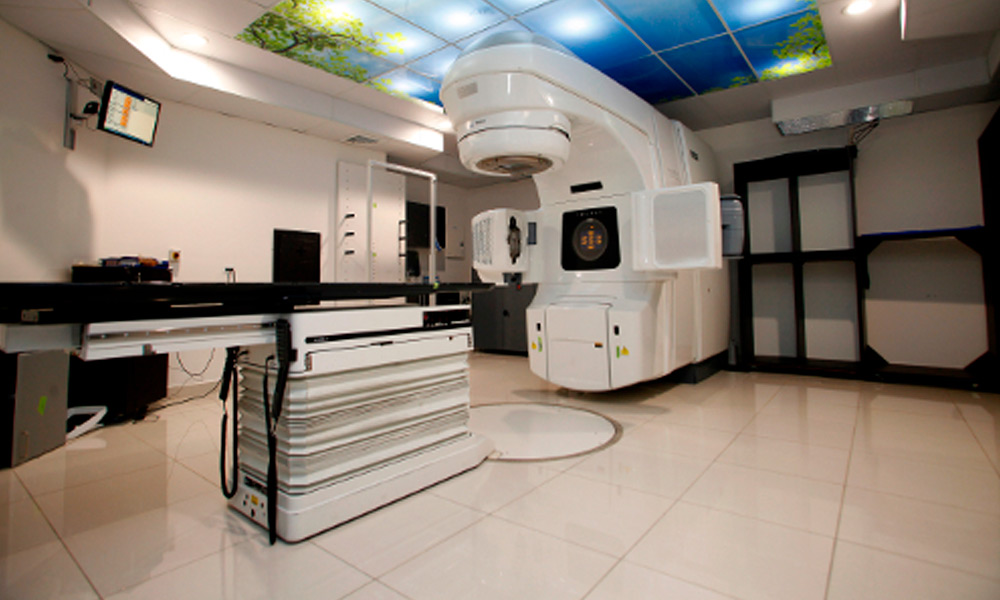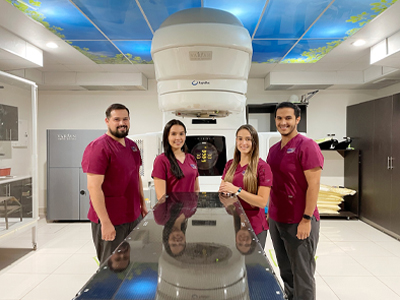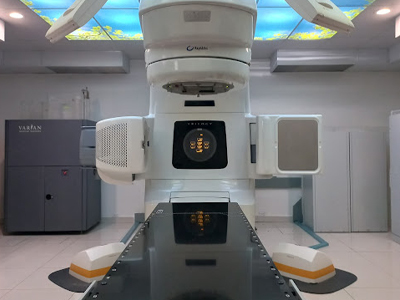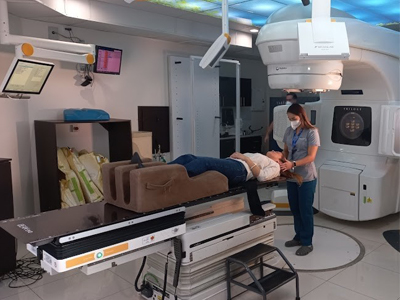Intensity Modulated Radiotherapy (IMRT)

Intensity-Modulated Radiation Therapy (IMRT) is an advanced radiation therapy technique. It allows doctors to deliver precise, highly-conformed doses of radiation to a tumor, while minimizing exposure to nearby healthy tissues.
Unlike traditional radiotherapy, where radiation is delivered in uniform beams, IMRT (Intensity-Modulated Radiation Therapy) modulates the intensity of each beam. This allows it to adapt precisely to the tumor's specific shape and size, minimizing exposure to healthy tissues.
IMRT (Intensity-Modulated Radiation Therapy) enables radiation oncologists to precisely mold the radiation dose to the tumor's three-dimensional shape. This achieves an incredibly high quality of treatment in a remarkably short time—approximately 3 minutes. This precision and speed significantly increase patient comfort and enhance the overall accuracy of the treatment.
Let's dive deeper into the next section.
How does it work?
Detailed imaging, such as CT scans (Computed Tomography) or MRIs (Magnetic Resonance Imaging), is used to precisely map the tumor. This crucial step ensures that the radiation treatment can be accurately targeted.
The radiation therapy machine (a linear accelerator) moves around the patient, adjusting the intensity and direction of the radiation beams in real-time. This dynamic movement, combined with real-time adjustments, ensures the radiation is precisely delivered to the tumor while avoiding healthy tissue.
This precision allows for the treatment of irregular tumor areas or those located near sensitive organs with remarkable accuracy.
Benefits from IMRT
This approach significantly reduces damage to nearby healthy organs and tissues.
This technique allows for higher radiation doses to be delivered to the tumor, which can significantly improve treatment effectiveness.
This typically leads to fewer side effects compared to conventional radiation therapy.
It's particularly useful for tumors located in areas with sensitive nearby structures, such as the prostate, head and neck, and brain.
Which organs benefit from this treatment technique?
Intensity-modulated radiation therapy (IMRT) can benefit various organs and cancer types. This is thanks to its ability to deliver precise, tailored doses of radiation, which minimizes damage to surrounding healthy tissues. Some of the organs and situations where IMRT is especially useful include:
Prostate
IMRT (Intensity-Modulated Radiation Therapy) allows for the highly precise treatment of prostate cancer, protecting the nearby bladder and rectum to reduce side effects.-
Head and Neck
Tumors in complex areas like the base of the skull, oral cavity, larynx, and nasopharynx greatly benefit from IMRT. These regions contain many delicate tissues such as salivary glands and nerves, which IMRT helps protect. -
Lungs
For lung cancer, IMRT helps direct radiation to the tumor while protecting healthy lung tissue and the heart. -
Liver
IMRT es útil para tumores hepáticos, ya que el hígado es sensible a la radiación y es fundamental preservar su función. -
Pancreas
Given that the pancreas is close to critical organs like the stomach and intestines, IMRT allows for the delivery of high doses with less toxicity. -
Spinal Cord
For tumors located near the spinal cord, IMRT helps prevent neurological damage by limiting the dose received by the cord itself. -
Rectum and Other Pelvic Organs
Cancers in the pelvic area, such as those in the rectum or bladder, benefit from this precision, as it helps protect neighboring tissues.
In summary, IMRT (Intensity-Modulated Radiation Therapy) can be applied to virtually any tumor where precision and the protection of normal tissues are key to improving outcomes and reducing side effects..





